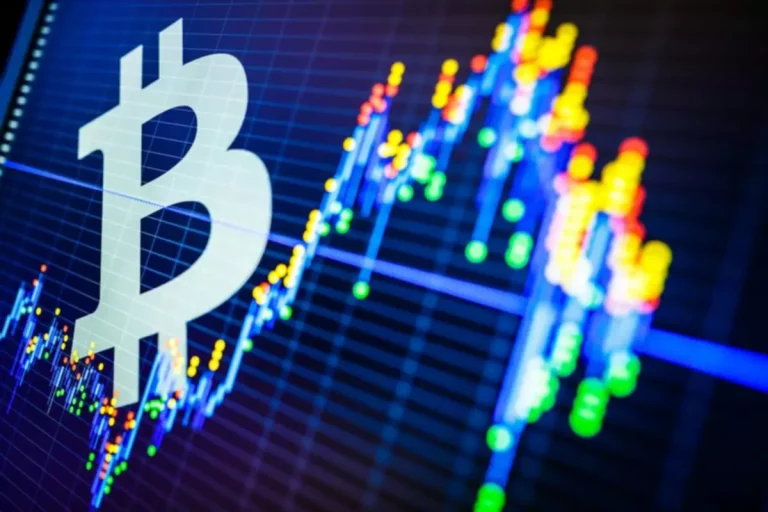For the purposes of crypto, liquidity most often refers to financial liquidity and market liquidity. These variables make it difficult to perfectly match the value of a derivative with the underlying asset. Counterparty risks are a type of credit risk in that the parties may not be able to live up to the obligations outlined in the contract. If one party becomes insolvent, the other party may have no recourse and could lose the value of its position.
And there were still lots of hypes, lots of people from traditional finance industry or traditional tech industry, or just people interested in knowing the space. But right now, I felt there are less hypes or less window shoppers, but there are more builders and more Westerners traveling to Asia for TOKEN2049, I guess, due to regulatory reasons. They actually are investors and we’re their investors as well. The founder of Dragonfly Capital literally hand-picked up everyone.
Swaps related to the cash flows and potential defaults of mortgage bonds are an extremely popular kind of derivative. It was the counterparty risk of swaps like this that eventually spiraled into the credit crisis of 2008. Swaps are another common type of derivative, often used to exchange one kind of cash flow with another. For example, a trader might use an interest rate swap to switch from a variable interest rate loan to a fixed interest rate loan, or vice versa.
For instance, a soybean farmer can sell crops before they are even planted through soybean futures contracts. It allows a farmer to budget for that set price without worrying about huge fluctuations that could rise or fall depending on inflation or if the marketplace is flooded with a hearty soybean harvest. For example, if too many traders have long positions and the price of BTC perpetual contracts is rising excessively above BTC’s spot price, people would have no incentive to open short positions.
At the beginning of the swap, XYZ will just pay QRS the 1 percentage-point difference between the two swap rates. Decentralized derivative protocols are often based on decentralized governance models that allow users to participate in decision-making to varying degrees. However, some protocols may have more decentralized governance structures, while others may rely on more centralized decision-making.
For instance, the value of an ETH derivative contract is based on the ether (ETH) price. Leverage trading is the ability to control a large amount of an asset with a relatively small amount. For example, a trader may only need to put down 10% of the total value of a futures contract. For instance, on the crypto exchange Binance, a trader can leverage up to 125 times the initial margin. But while leverage can amplify potential profits, it also drastically increases the risk of losses.
- Because you know, Bitcoin, so it’s all about when this blocks is built and the 3.5 to 4 year Bitcoin cycle or crypto cycle, bull market and bear market cycle is there mainly because of halving.
- By enabling investors to go long and short, price discovery mechanisms can become more efficient, leading to smoother market adjustments and avoiding adverse price shocks.
- For example, if a perpetual swap’s price is higher than its underlying asset’s spot price, long position holders are charged the funding rate, which they pay to traders in the short position.
What distinguishes futures contracts from other crypto derivative instruments is the specific settlement date. Derivatives can help to hedge against potential risks and increase returns through leverage. For example, a trader can use leverage crypto derivatives exchange on a small amount of capital to purchase a futures contract that controls a larger amount of the underlying asset. Crypto derivatives let investors place bets on the price changes of cryptocurrencies without owning the underlying asset.

And by the way, I experimented with ChatGPT the other day and I asked it to pick up 10 cryptocurrency that I should look into if I’m a risk averse investor. And in that 10 cryptocurrencies list, there is Terra Luna and that just happened a few months ago. So that’s what I mean by like historical data or data security concerns. And if you are relying your investment strategy things like ChatGPT, it can be very dangerous. Another answer is that derivatives let traders shuffle their money around to manage risk – known as hedging. In the real world, farmers like derivatives because they can lock in a price for their crop to avoid worrying about price volatility.
What Are Crypto Derivatives? A Beginner’s Guide – CoinDesk
What Are Crypto Derivatives? A Beginner’s Guide.
Posted: Mon, 02 Oct 2023 14:15:00 GMT [source]
For example, if the market is bullish, you should go with an options contract. Liquid markets come with high supply and demand for assets, making them more accessible for buyers and sellers. Briefly put, it refers to how easily orders can be transacted within a market without affecting the price of an asset. It indicates how many buyers and sellers there are, and whether or not transactions can be facilitated easily.
Crypto prices are volatile, and since crypto derivatives drive their value from underlying assets, they are subject to the same volatility. So, traders should only use it if they understand how it works and they are comfortable with the potential risks. Perpetual swap contracts are financial derivatives that allow you to speculate on the price movement of crypto assets using leverage.

If we use the same example as above replacing crypto futures with options, the following key details would have to change. With Bitcoin options, you do not long or short, instead, you have “call” and “put” options. A call option gives its owner the right to purchase bitcoin at an agreed price once the contract expires. With either option, it is entirely up to the owner whether they choose to exercise their right or not. While synthetic assets share similarities with stablecoins, they’re more diverse because they can represent a wide range of assets, including stocks, precious metals, altcoins, options, and futures.
During the first phase of the contract, the sides agree on a selling/buying price for the cryptocurrency on a specific day, regardless of the market price. As a result, investors can profit from changes in the underlying asset’s price by purchasing the currency at a cheaper price and selling it at a higher price. Derivatives allow traders to get exposure to the price movement of an underlying asset without actually owning it.
Crypto futures are a type of derivative contract that allows two parties to agree on the price of a cryptocurrency at a fixed date in the future. Upon expiration of the contract, the buyer is obligated to receive and purchase the asset, while the seller is obligated to deliver and sell the asset. So, what kind of derivatives are available in the crypto market? The most commonly traded types of derivatives include futures, options, and perpetual contracts. Crypto derivatives operate similarly to traditional derivatives, where a buyer and seller enter into a contract to sell an underlying asset, with the asset being sold at a predetermined time and price. With regards to the cryptocurrency market, derivatives are contracts signed by two or more parties to buy or sell a certain cryptocurrency asset for a set price in the future.
